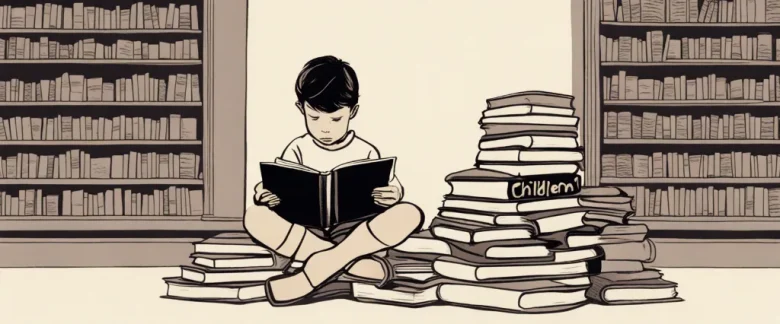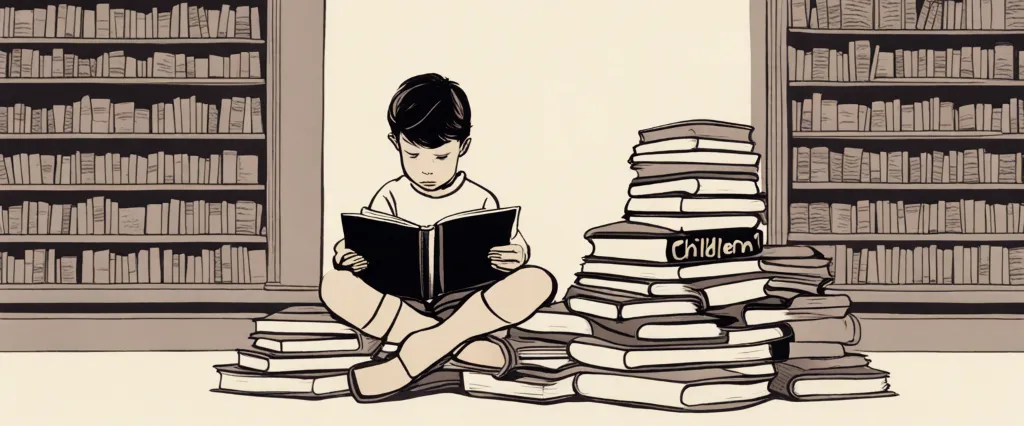In “Children of the Self-Absorbed,” Nina W. Brown delves into the complex and often overlooked dynamics of growing up with a self-absorbed parent. Drawing from her extensive experience as a psychologist and family therapist, Brown explores the unique challenges faced by children who are raised by parents preoccupied with their own needs and desires. With remarkable insight and empathy, she offers valuable guidance and strategies to help adult children navigate the lasting impacts of self-absorption on their self-esteem, relationships, and overall well-being.
Nina W. Brown is a renowned psychologist, educator, and author, specializing in the field of family therapy and individual counseling. With over four decades of experience, she has made significant contributions to the psychological community through numerous scholarly articles, books, and professional presentations. Brown’s expertise lies in understanding the intricacies of family dynamics and the effects of self-absorption on parent-child relationships. Her compassionate approach and expertise make her an invaluable guide for those seeking to heal and thrive in the face of self-absorbed parenting.
Chapter 1: The Narcissistic Parent
Chapter 1 of the book “Children of the Self-Absorbed” by Nina W. Brown focuses on understanding the concept and characteristics of a narcissistic parent. The chapter provides an overview of the impact that growing up with a narcissistic parent can have on children.
The chapter begins by describing narcissistic personality disorder (NPD) as a psychological disorder characterized by an exaggerated sense of self-importance, a constant need for admiration, and a lack of empathy for others. It explains that narcissistic parents are primarily concerned with meeting their own needs rather than nurturing their children’s emotional well-being.
Brown highlights some key characteristics of narcissistic parents, including their tendency to view their children as an extension of themselves and to use them as a means of gaining attention and validation. These parents often have unrealistic expectations of their children’s achievements and may become competitive or resentful if their children are perceived as outshining them.
The chapter also delves into the emotional impact that growing up with a narcissistic parent can have on children. The author emphasizes that children of narcissists often struggle with low self-esteem, as they are constantly criticized and invalidated by their parents. They may also develop a skewed sense of reality and struggle with setting healthy boundaries in their relationships.
Additionally, the chapter discusses the varying degrees of narcissism and the different ways in which narcissistic parents may manifest their behavior. It emphasizes that not all children of narcissistic parents will have the same experiences, but many will face challenges in establishing their own identity and achieving emotional autonomy.
Overall, Chapter 1 serves as an introduction to the topic of narcissistic parenting, providing readers with an understanding of the traits and behaviors associated with narcissistic parents, as well as the potential impact these parents can have on their children’s psychological well-being.
Chapter 2: The Emotional Toll
Chapter 2 of “Children of the Self-Absorbed” by Nina W. Brown delves into the emotional toll that growing up with a self-absorbed parent can have on children. It highlights the effects on their sense of self-worth, emotional intelligence, and ability to form healthy relationships.
The chapter begins by describing how self-absorbed parents often lack genuine empathy towards their children, leading the children to feel emotionally neglected. This emotional neglect can result in the child feeling unimportant, unworthy, and constantly seeking validation from others. This lack of self-worth can detrimentally impact various aspects of their lives as they grow older.
Additionally, children of self-absorbed parents often struggle with emotional intelligence. Without proper guidance and support, they may have difficulty identifying and managing their own emotions and expressing empathy towards others. This can lead to challenges in forming meaningful relationships, both personally and professionally.
The chapter also discusses how self-absorbed parents tend to manipulate their children’s emotions, guilt-tripping them or using them as emotional support. This emotional burden can be overwhelming for the child, as they may feel responsible for their parent’s emotional well-being, or constantly torn between their own needs and their parent’s demands.
Ultimately, this emotional toll can lead to long-lasting effects that impact the child’s self-esteem, ability to trust, and overall well-being. The chapter emphasizes the importance of understanding and addressing these emotional challenges in order to move towards healing and developing healthier relationships in adulthood.
Chapter 3: The Cycle of Narcissism
Chapter 3: The Cycle of Narcissism from the book Children of the Self-Absorbed by Nina W. Brown explores the pervasive impact of narcissistic parenting on children and how it perpetuates a cycle of narcissism across generations.
The chapter begins by highlighting how self-absorbed parents prioritize their own needs, desires, and interests above their children’s. These parents often have an inflated sense of self-importance, lack empathy, and frequently seek admiration from others. They may be preoccupied with their appearance, achievements, or social status, making it difficult for them to form healthy, meaningful connections with their children.
Brown explains how narcissistic parents tend to view their children as mere extensions of themselves, using them to boost their own self-esteem rather than nurturing and supporting their development as individuals. As a result, children raised by narcissistic parents may struggle with low self-worth, emotional neglect, and feel like they have to constantly earn their parent’s love and approval.
The chapter also delves into the intergenerational transmission of narcissism, where children of narcissistic parents often adopt narcissistic traits themselves. Brown describes the different manifestations of these traits, including entitlement, lack of empathy, grandiosity, and an excessive need for admiration. She discusses how these children can grow up to repeat the cycle by becoming self-absorbed parents, perpetuating the harmful impact on subsequent generations.
Through personal anecdotes, case studies, and research findings, Brown emphasizes the complexity of breaking free from the cycle of narcissism. She provides insights into the healing process and outlines strategies for individuals to develop healthier self-esteem, establish boundaries, and cultivate empathy and self-care.
In conclusion, Chapter 3 of Children of the Self-Absorbed examines the parental narcissism cycle, shedding light on how narcissistic parents impact their children and how these children can perpetuate the negative cycle in their own lives. The chapter underscores the importance of self-awareness, healing, and breaking free from the patterns of narcissism to foster healthier relationships and psychological well-being.
Chapter 4: Coping Strategies

Chapter 4 of “Children of the Self-Absorbed” by Nina W. Brown explores the coping strategies that individuals develop when raised by self-absorbed parents. The chapter delves into the various ways children adapt to their challenging upbringing and attempts to understand why some children develop maladaptive coping strategies, while others are more resilient.
Brown begins by discussing the concept of splitting, where children see their parent as either all good or all bad, with no nuance in between. This black-and-white thinking allows children to create a sense of stability and control in their lives. However, this coping strategy often leads to difficulties in forming healthy relationships later in life, as it distorts their perception of others.
Another coping strategy explored is dissociation, where children mentally detach themselves from stressful situations or emotions as a means of self-preservation. This strategy allows them to momentarily escape the distress caused by their self-absorbed parent’s behavior. However, dissociation can have long-term effects on the individual’s ability to regulate emotions and may lead to feelings of emptiness or detachment.
The chapter also discusses the coping strategies of compliance and avoidance. Children who comply with their self-absorbed parent’s demands and expectations hope to limit conflict and maintain a sense of peace in their environment. On the other hand, avoidance involves distancing oneself emotionally from the parent and their demands, often by focusing on other aspects of their life such as school or extracurricular activities.
Throughout the chapter, Brown emphasizes that while these coping strategies may initially serve as survival mechanisms, they can hinder the individual’s ability to develop healthy relationships and maintain a sense of self. Recognizing these strategies is crucial for individuals to start healing and gradually move towards healthier ways of coping with their past.
Chapter 5: Healing and Recovery
Chapter 5 of “Children of the Self-Absorbed” by Nina W. Brown focuses on the process of healing and recovery for those who have grown up with self-absorbed parents. The chapter provides guidance and practical steps for individuals seeking to heal from the effects of their childhood experiences.
Firstly, the chapter emphasizes the importance of self-awareness in the healing process. Recognizing the impact of self-absorbed parents and understanding one’s own wounds allows individuals to take ownership of their healing journey. Additionally, identifying and acknowledging the specific ways in which one was affected by their parents’ self-absorption is crucial in order to overcome these challenges.
The author outlines several key steps towards healing and recovery. Firstly, individuals are encouraged to seek support from others. This can include therapy, support groups, or close friends and family members who can provide a safe space for processing emotions and experiences. Developing a supportive network is essential for healing and breaking the cycle of self-absorption.
Next, the chapter highlights the significance of setting boundaries. By establishing clear and healthy boundaries, individuals can protect themselves from repeating patterns of self-sacrifice and enable healthier relationships with others. Learning to say “no” and prioritize self-care becomes crucial in this process.
Finally, the chapter emphasizes the importance of self-love and self-compassion. Learning to nurture oneself, embracing self-care practices, and developing a positive self-image are all fundamental components of healing. By cultivating self-compassion, individuals can begin to challenge the negative self-beliefs that were instilled by their self-absorbed parents.
In summary, Chapter 5 of “Children of the Self-Absorbed” provides a comprehensive guide for healing and recovery for those impacted by self-absorbed parents. Through self-awareness, seeking support, setting boundaries, and practicing self-compassion, individuals can embark on a journey of healing and break free from the negative effects of their upbringing.
Chapter 6: Setting Boundaries
Chapter 6 of the book “Children of the Self-Absorbed” by Nina W. Brown is titled “Setting Boundaries.” In this chapter, Brown explores the importance of establishing and maintaining boundaries when dealing with self-absorbed parents.
The chapter begins by discussing how self-absorbed parents often blur boundaries, leading to issues such as enmeshment or neglect. Enmeshment occurs when parents invade their children’s privacy, making them feel responsible for their emotions and choices. On the other hand, neglectful parents fail to acknowledge and fulfill their children’s emotional needs, resulting in a lack of healthy boundaries.
Brown offers practical strategies for setting boundaries with self-absorbed parents. She emphasizes the significance of self-awareness and understanding one’s rights and responsibilities. By recognizing that they are not responsible for their parent’s emotions or actions, adult children can begin to establish healthier boundaries.
The author proposes assertiveness as a key tool in boundary-setting. Assertiveness, rooted in effective communication, allows individuals to express their needs, thoughts, and feelings respectfully, while also respecting others. Brown provides specific techniques and scripts to help adult children navigate challenging conversations with their self-absorbed parents while maintaining clear boundaries.
Another aspect discussed in this chapter is self-care. Brown emphasizes the importance of taking care of one’s own emotional and physical well-being to establish and enforce boundaries effectively. Setting aside time for self-reflection and self-nurturing activities strengthens one’s ability to assertively communicate and maintain boundaries with self-absorbed parents.
Overall, Chapter 6 of “Children of the Self-Absorbed” offers strategies and techniques to help adult children set and maintain healthy boundaries with their self-absorbed parents. By understanding their rights and responsibilities, practicing assertiveness, and prioritizing self-care, individuals can navigate challenging relationships and establish boundaries that promote their well-being.
Chapter 7: Building Self-Esteem
Chapter 7 of Children of the Self-Absorbed by Nina W. Brown, titled “Building Self-Esteem,” delves into the importance of nurturing and developing a healthy sense of self-esteem in children growing up with self-absorbed parents. Throughout the chapter, Brown explores the detrimental effects of having self-absorbed parents on a child’s self-image and offers strategies for parents, therapists, and educators to help these children build their self-esteem.
Brown begins by highlighting how self-absorbed parents often neglect their children’s emotional needs, resulting in feelings of worthlessness and inadequacy in their offspring. She emphasizes that building self-esteem in children is crucial to counteract these negative effects and promote their overall well-being.
To assist children in developing healthy self-esteem, Brown suggests various strategies. First, she advocates for providing children with positive affirmations regularly, focusing on their strengths and accomplishments rather than their shortcomings. Additionally, parents ought to model self-compassion and empathy, as children tend to internalize their parents’ self-absorbed behaviors and beliefs.
Brown also emphasizes the significance of setting realistic expectations for children, promoting autonomy and decision-making skills, and encouraging healthy risk-taking. Involving children in tasks and activities that align with their interests and talents can further foster their self-esteem.
Furthermore, she advises therapists and educators to provide a nurturing environment that supports children’s emotional and psychological growth. Techniques such as cognitive-behavioral therapy and group therapy can be effective in addressing self-esteem issues and helping children develop a positive self-image.
In summary, Chapter 7 of Children of the Self-Absorbed explores the importance of building self-esteem in children growing up with self-absorbed parents. The chapter emphasizes the detrimental effects of self-absorption on a child’s self-image and offers strategies for parents, therapists, and educators to help foster a healthy sense of self-esteem in these children.

Chapter 8: Breaking the Cycle
Chapter 8 of “Children of the Self-Absorbed” by Nina W. Brown, titled “Breaking the Cycle,” addresses the importance of breaking the generational cycle of self-absorption. In this chapter, Brown outlines strategies and techniques for individuals to free themselves from the negative patterns they may have inherited from their self-absorbed parents.
The chapter begins by highlighting the significance of self-awareness and understanding the impact of self-absorbed parents on their children. Brown emphasizes that recognizing the harmful behavior and its effects is crucial for initiating change. By gaining insight into the family dynamics and individual experiences, individuals can bring attention to these patterns and cease perpetuating them.
The author explores various methods for breaking the cycle of self-absorption, starting with setting boundaries. Brown explains that establishing clear boundaries is vital in developing healthy relationships and maintaining emotional well-being. She provides practical advice on how to communicate boundaries effectively and enforce them when necessary.
Additionally, Brown emphasizes the significance of developing empathy and self-compassion. Understanding the feelings and experiences of oneself and others is crucial for creating meaningful connections and breaking free from self-absorption. The author offers practical exercises and suggestions to cultivate empathy and self-compassion.
Furthermore, the chapter delves into the importance of self-care and self-love. Brown highlights the necessity of nurturing one’s own needs and wellbeing, as well as the importance of fostering a positive relationship with oneself. She emphasizes the value of self-reflection, self-acceptance, and practicing self-care regularly.
In conclusion, Chapter 8 of “Children of the Self-Absorbed” provides valuable insights and practical strategies for individuals seeking to break the generational cycle of self-absorption. By developing self-awareness, setting boundaries, cultivating empathy and self-compassion, and prioritizing self-care, individuals can free themselves from negative patterns and strive for healthier relationships and emotional well-being.
After Reading
In conclusion, “Children of the Self-Absorbed” by Nina W. Brown offers a valuable insight into the challenges faced by individuals growing up with self-absorbed parents. By delving deep into the patterns and dynamics of these relationships, the book sheds light on the emotional, psychological, and relational impacts experienced by these children. Brown provides practical strategies and tools for healing and growth, emphasizing the importance of self-compassion and breaking free from the cycle of self-absorption. Ultimately, this book serves as a compassionate and empowering guide for individuals, therapists, and anyone seeking to understand the profound effects of self-absorption on children and the path towards healing.
1. “Adult Children of Emotionally Immature Parents: How to Heal from Distant, Rejecting, or Self-Involved Parents” by Lindsay C. Gibson
– This book explores how adult children who grew up with emotionally immature parents can heal and move forward in their lives. It offers valuable insights and practical strategies for breaking the cycle of self-absorption and developing healthy relationships.
2. The Drama of the Gifted Child: The Search for the True Self” by Alice Miller
– Alice Miller delves into the impact of narcissistic parents on their gifted children, highlighting the struggles they face in developing a genuine sense of self. This thought-provoking book provides a deeper understanding of the effects of self-absorbed parenting and offers guidance for overcoming its long-lasting consequences.
3. “The Narcissistic Family: Diagnosis and Treatment” by Stephanie Donaldson-Pressman and Robert M. Pressman
– Focusing on the damaging dynamics within a narcissistic family system, this book sheds light on the intergenerational effects of self-absorption. It offers comprehensive insights into the narcissistic parent-child dynamic and provides practical guidance for professionals and individuals looking to heal from the consequences of growing up in a self-absorbed family.
4. “The Self-Absorbed Partner: A Roadmap to Divorce and Recovery” by Alan J. Hawkins and Tamara A. Fackrell
– While this book primarily focuses on self-absorption in intimate relationships, it can also be beneficial for those dealing with self-absorbed parents. It presents a roadmap for recognizing, dealing with, and recovering from relationships with self-absorbed partners, offering insights and strategies for building healthier connections.
5. “Understanding the Borderline Mother: Helping Her Children Transcend the Intense, Unpredictable, and Volatile Relationship” by Christine Ann Lawson
– Even though this book focuses on borderline mothers, it also touches on self-absorbed tendencies. It explores the impact of a mother’s self-absorption on her children, emphasizing how they can navigate through the complex and often distressing relationships with their mothers. The book provides support, validation, and practical advice for adult children to heal from these challenging dynamics.




